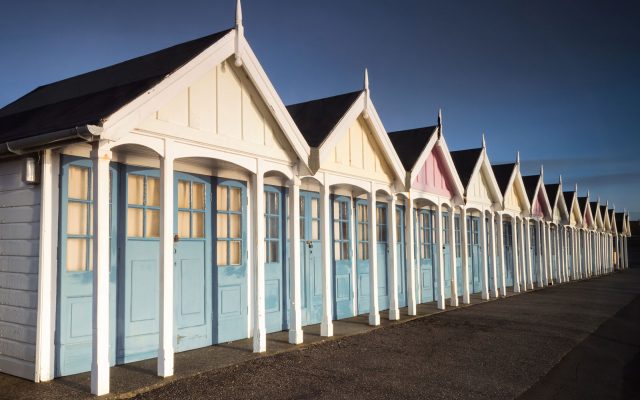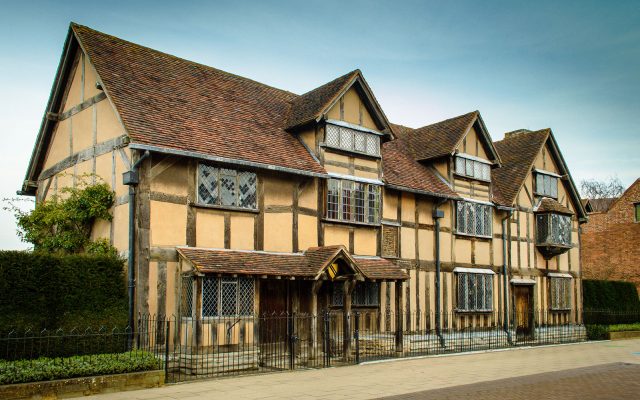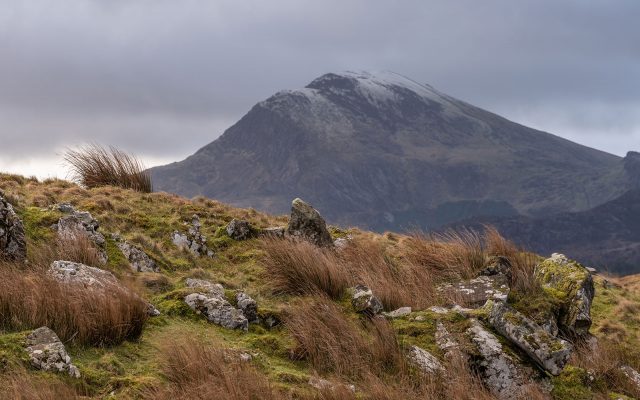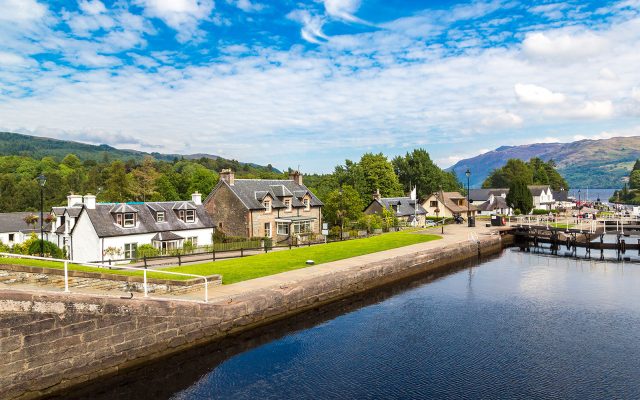At Headwater, we’re proud to deliver self-guided Walking and Cycling Holidays across the United Kingdom that showcase each region’s distinct local flavour, hidden gems and unique charm. Our turn-by-turn route directions are specifically designed for those looking to explore at their own leisure, closer to home. From the mysterious heather-clad moors of the Scottish Highlands to the enchanting timber villages that once inspired William Shakespeare, we’ve selected our 5 top villages around the United Kingdom that offer the perfect base for you to explore these fascinating regions, on foot and by bike.

If you’re looking for superb seafood restaurants, historic harbours and relaxing evening walks along soft golden beaches, then you’ve come to the right place. On the first day of our Jewels of the Jurassic Coast Walk, we stay at Hotel Rembrandt, a characterful hotel in Weymouth that’s located just a 5-minute walk away from the beach, the South West Coast Path and the Jurassic Skyline Viewing Tower.
While you’re here, we’d recommend taking a splendid stroll down the Georgian Esplanade, often described as the English equivalent to the Bay of Naples. Or take a longer walk to the ruins of the 16th century Sandsfoot Castle – one of Henry VIII’s Device Forts.
You could say the quaint coastal resort of Weymouth is the perfect gateway to explore the fascinating Jurassic Coast. Encompassing 185 million years of the Earth’s history in under 100 miles – this coastal stretch holds the title of England’s first natural UNESCO World Heritage Site, and for good reason. Amidst its craggy coves, soft sand beaches and white chalk cliffs where puffins waddle overhead, avid hikers can follow the famous smugglers’ route down to the charming village of Osmington, where you can make a pit stop in the aptly named 13th century Smugglers’ Inn for some traditional English pub classics.
Next, make a slight ascent and continue your walk to the top of Burning Cliff, where you will be rewarded with the most spectacular views of the fossil-filled Jurassic Coast before heading on to Durdle Door – one of the most photographed rock arches in the world.
After soaking in this beautiful sight, you make your way to the crystal-clear waters of Lulworth Cove – a river that was said to have been swollen by melting ice from the last Ice Age. Undoubtedly famous for its unique geology, this spot is also a great place to tuck into homemade cakes and cream teas at the Boat Shed Café. Or why not spend the afternoon at Lulworth Cove’s renowned Heritage Centre, which offers key insight into our nation’s geology. When discovering the best hidden gems of the Jurassic Coast, you’ll soon find that the quaint resort of Weymouth is the perfect starting point.

If you’re looking to discover Neolithic long barrows, Iron Age hill forts and medieval merchant houses, then the spectacular rolling hill landscapes of the Cotswolds and the picturesque town of Stratford Upon-Avon won’t disappoint. In fact, nestled amongst these beautiful honey-stone villages and idyllic communities that make up the enchanting Cotswolds, you’ll find a human history that dates back over 6,000 years, which in itself offers a seemingly endless number of historical, long distance trails to uncover.
Spread across five different counties, this delightful slice of rural southern England is the largest Area of Outstanding Natural Beauty in Britain covering over 2,000km. Peppered with gentle slopes, dramatic hills and charming countryside inns, the Cotswolds offers the perfect walking holiday on your doorstep.
If you’re wanting to explore the Cotswolds historical countryside on foot, our Best of the Cotswolds Walk includes a lovely 8-night stay in some of the best North Cotswolds villages.
On this relaxing walking adventure, our detailed self-guided route directions lead you to places of great historical interest, dating back to the Saxon and Jacobean to Medieval eras. With fascinating visits to well-known towns, you can discover the 13th Century Norman Church of St Eadburgha in Broadway, Chipping Campden’s oolitic limestone buildings and the beautiful russet-coloured houses of Guiting Power.
On the trip, you can also take a detour to explore Cotswolds horticultural gems including the National Trust manor houses of Kiftsgate and Hidcote. For a more in-depth look into Cotswold’s world-famous villages, our Walking the Cotswold Ring self-guided route, begins at the historic spa town of Cheltenham and takes you to historic sites of Broadway, Bourton-on-the-Water, the Saxon capital of Winchcombe and Chipping Campden, with an optional route to visit, “Shakespeare Country” – Stratford-upon-Avon.
Enjoy the opportunity to walk in the footsteps of one of the world’s most famous literary figures, and take a wander down Henley Street, where William Shakespeare along with his siblings grew up in an enchanting half-timbered building. While you’re here, why not wander around it’s fantastic array of shops and quaint cafes. We’d recommend visiting the Magic Alley & the Creaky Cauldron – one of the oldest magic shops of its kind in the world, this fascinating shop also has a cosy café where you can try their home-brewed butterbeer.

You can’t venture to the North of Wales without making a pit-stop in the chocolate box conservation village of Beddgelert. The picturesque stone-built village that becomes covered in a purple blaze of heather around summertime, is the ideal base for exploring the best nature trails and breath-taking scenery Wales has to offer.
With Aberglaslyn Pass to the south, Nant Gwynant to the east and the towering peaks of Snowdonia National Park to the north, there are ample opportunities for hiking around the charming village of Beddgelert.
On our new Walking the Welsh Highland Railway trip, get the opportunity to wander through the lush ancient woodlands of Beddgelert forest, where you can picnic by the picturesque lake of Llyn Llywelyn and take in the beautiful views of Moel Hebog in Snowdonia. You will also be using the Old Welsh Highland railway trains, which cut through the forest on route from Caernarfon to Porthmadog, for some of your walking transfers.
After you’ve had your fill of exploring the beautiful surrounding forests and Welsh farmlands, you’ll enjoy a gentle stroll past Beddgelert’s quaint local arts and crafts shops and visit Gelert’s grave, the faithful dog of medieval Welsh prince, Llywelyn, before taking the historic Heritage steam train to Rhyd Ddu.

Located at the south-west end of Loch Ness, the quaint settlement of Fort Augustus offers the perfect base for exploring the beautiful, untamed landscapes in the Scottish Highlands. It may be the decades of folklore that surround sightings of the elusive Loch Ness Monster that initially bring travellers to this legendary loch, but it’s the network of tumbling waterfall trails, misty heather-clad moors and mysterious stone castles that end up capturing their imagination.
One of the best ways to explore this region of undisputed natural beauty is by bike. During the Loch Ness & the Highlands Cycling trip, your self-guided route directions take you along the breath-taking Caledonian Canal, one of the most beautiful waterways in Europe, while following old military roads towards serene mirror-glass lochs and bustling country inn tearooms. As you pass along this section of the Beauly Firth and Great Glen Way, keep a look out for wild deer, red squirrels and magnificent golden eagles.
On the 2nd day of our trip, we enjoy staying overnight in the charming village of Fort Augustus, that received its name from a fort built after the defeat of the 1715 Jacobite uprising.
In the morning, we head out along General Wade’s old military road, to Whitebridge. From here, you can enjoy cycling the optional route to the famous Falls of Foyers, the waterfall that inspired celebrated Scottish poet, Rabbie Burns.
Afterwards, take a ride through the Boleskine woods and pedal along the riverside Inverfarigaig to Dores, one of the most picture-perfect villages in the region. While you’re in the area, don’t miss the opportunity to stop in the Dores Inn to try their quality Scottish produce. From traditionally made haggis and tatties to scallops and seafood specials, the food is bound to impress – they even have a dedicated Loch Ness Monster spotting vantage point!
If this has inspired you to visit one of these towns and villages in the UK, why not find out more information about our selection of Walking and Cycling Holidays, here.